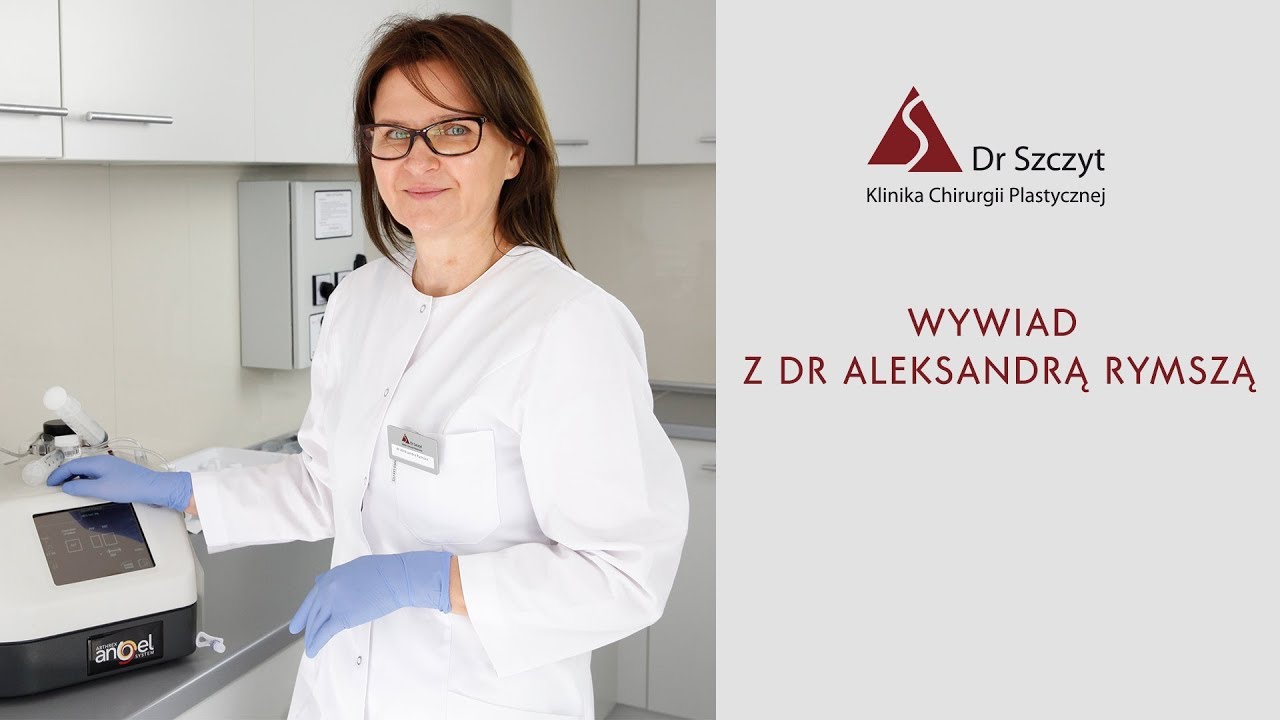Plastic surgery versus aesthetic medicine - differences

Modern methods of improving one's appearance offer enormous possibilities - from non-invasive procedures that smooth the skin to advanced surgeries that alter facial features or body shape. Plastic surgery and aesthetic medicine are often confused with each other, although they differ in their scope of action, degree of invasiveness and effects. One focuses on permanent changes through surgical intervention, while the other offers quick and less intrusive methods of beauty enhancement. What are the differences between the two fields?
Plastic surgery - what is it and what are its applications?
Plastic surgery is one of the most developed and versatile fields of medicine, combining advanced medical knowledge with aesthetics and body reconstruction. Its history dates back to antiquity - the first references to reconstructive procedures appeared in Egypt around 2500-3000 BC. However, the dynamic development of this specialty occurred only in the 19th and 20th centuries, especially during the period of wars, when the need to treat serious injuries forced the advancement of surgical techniques. As a result, today's plastic surgery offers both advanced reconstructive methods and precise aesthetic procedures, allowing patients to improve both appearance and body function.
Types of plastic surgery
Plastic surgery is divided into reconstructive surgery and cosmetic surgery, which differ in purpose, scope and surgical techniques.
Reconstructive surgery - restoring function and appearance
Reconstructive surgery is the primary branch of plastic surgery, focused on the reconstruction of tissues and organs that have become deformed due to trauma, cancer, congenital defects or chronic diseases. The main goal is to restore body function and improve patient comfort.
The most commonly performed reconstructive procedures:
- Breast reconstruction after mastectomy - reconstruction of the breast after cancer treatment, often using implants or transplantation of the patient's own tissues,
- Post-traumatic surgeries - such as reconstruction of the face, hands or limbs after accidents,
- Treatment of congenital defects - such as correction of cleft lip and palate in children,
- Microsurgery - tissue transplants, restoration of innervation and blood supply to damaged areas,
- Treatment of post-surgical complications and burns - tissue reconstruction after severe skin burns.
Reconstructive procedures often require multiple stages of treatment and close cooperation between plastic surgeons, oncologists, orthopedists and neurologists. Their results not only improve body aesthetics, but most importantly enable patients to function normally.
Cosmetic surgery - improving the appearance and proportions of the body
Cosmetic surgery focuses on improving appearance, body contouring and correcting signs of aging. The procedures are designed to boost the self-confidence and well-being of patients who want to correct imperfections resulting from genetics, aging processes or previous injuries.
The most popular cosmetic surgery procedures:
- Rhinoplasty (nose correction) - improving the shape and function of the nose,
- Face and neck lift - reducing wrinkles, firming skin, rejuvenating facial features,
- blepharoplasty (eyelid correction) - removal of excess skin and fat from the eyelids for younger-looking eyes,
- Liposuction - body contouring by removing excess fat,
- Breast surgery - augmentation with implants, breast lift (mastopexy), breast reduction to improve body proportions and comfort,
- abdominoplasty (abdominal plasty) - removal of excess skin and fat, usually after pregnancy or major weight loss,
- Ear plastic surgery (otoplasty) - correction of protruding ears.
Cosmetic surgery procedures are performed at the patient's request and are not intended to restore bodily functions, but to improve appearance and well-being. Modern cosmetic surgery strives to achieve natural results, tailored to the patient's individual anatomical characteristics.
Plastic surgery - for whom is it appropriate?
Plastic surgery is a suitable solution for people who have experienced trauma or undergone surgeries that require tissue reconstruction, as well as for those who wish to improve facial and body proportions, gaining greater self-confidence. It is helpful for congenital defects like cleft lip or limb deformities, as well as for treating post-surgical complications and the effects of burns. Many people opt for plastic surgery to correct signs of aging, opting for a facelift or blepharoplasty to restore a younger and more harmonious appearance.
Aesthetic medicine - improving appearance without a scalpel
Aesthetic medicine, although often confused with plastic surgery, focuses on minimally invasive methods of improving one's appearance that do not require surgical intervention or a long convalescence. Its goal is not only to reduce signs of aging, but also to improve skin condition, harmony of facial features and prevention of aging processes. Unlike plastic surgery, which involves surgery and long healing times, aesthetic medicine procedures are quick, safe and allow patients to return to daily activities almost immediately.
Aesthetic medicine did not emerge as an independent field until the 1970s in France. It was then that the first research began on the use of botulinum toxin type A, or Botox, which was used in the 1980s to eliminate wrinkles on the forehead. The discovery sparked the rapid development of rejuvenation procedures, and technological advances have meant that modern aesthetic medicine offers much more than just wrinkle reduction. With the use of lasers, ultrasound, fillers or platelet-rich plasma, patients can achieve natural results to improve their appearance without surgery.
Range of aesthetic medicine treatments
Modern aesthetic medicine includes many procedures that improve the appearance of the skin, reduce wrinkles, contour facial features and counteract signs of aging. The most commonly used procedures are:
- Botulinum toxin (Botox) injections - smooth out facial wrinkles and prevent their deepening,
- Hyaluronic acid-based fillers - model the contours of the face, enlarge the lips and restore volume to the cheeks,
- Needle mesotherapy and platelet-rich plasma (PRP) - regenerate and nourish the skin, improving its elasticity,
- Laser therapies - remove hyperpigmentation, acne scars and improve skin tone,
- HIFU ultrasound lift - non-invasively firms the skin and improves its texture,
- Carboxytherapy - stimulates collagen production and reduces dark circles under the eyes.
Aesthetic medicine versus plastic surgery - key differences
Although both fields aim to improve appearance, they differ in the degree of invasiveness and the permanence of the results. Aesthetic medicine offers quick and less taxing treatments that require regular repetition to maintain results. Plastic surgery, on the other hand, provides lasting results, but involves a longer recovery process.
Aesthetic medicine will be the best option for people who want to gently improve their appearance, slow down the aging process and avoid surgery. Plastic surgery, on the other hand, is advisable for permanent correction of facial shape, body shape or reconstruction after injury and disease.
FAQ
What is the difference between plastic surgery and aesthetic medicine?
Plastic surgery includes both reconstructive and aesthetic surgeries, which require surgical intervention and a longer recovery period. Aesthetic medicine, on the other hand, focuses on non-invasive or minimally invasive procedures that improve appearance and counteract the aging process without surgery.
Does plastic surgery produce more lasting results than aesthetic medicine?
Yes, the effects of plastic surgery procedures are permanent, as they involve surgical alteration of tissue structure, such as nose correction or breast augmentation. Aesthetic medicine procedures, such as Botox or hyaluronic acid, require regular repetition every few months to maintain the effect.
What are the most common procedures performed in plastic surgery and aesthetic medicine?
In plastic surgery, the most common procedures are rhinoplasty (nose correction), facelift, liposuction, breast surgery (augmentation, reduction, lift) and abdominal plastic surgery. Aesthetic medicine offers botox, hyaluronic acid fillers, laser therapy, mesotherapy, HIFU lifting or platelet-rich plasma (PRP).
Is a long recovery necessary after aesthetic medicine procedures?
No. Most aesthetic medicine procedures do not require a long recovery period, and patients can return to normal activities almost immediately after the procedure. In the case of plastic surgery, healing takes several weeks or even months, and results may not be visible until several months later.
When is it a good idea to choose aesthetic medicine over plastic surgery?
Aesthetic medicine is an ideal choice for people who want to gently improve their appearance, slow down the aging process and avoid surgery. It is an excellent solution for the first signs of aging, improving skin condition and subtle correction of facial features.
Is plastic surgery the only solution for deep wrinkles?
Not necessarily. Aesthetic medicine offers advanced techniques, such as laser therapy, lifting threads and fillers, which effectively reduce deep wrinkles. However, for very advanced lesions, a surgical lift may be the best option.
Are botox and hyaluronic acid plastic surgery procedures?
No, these are aesthetic medicine treatments. Botox smooths facial wrinkles by weakening muscles, while hyaluronic acid fills tissue defects and restores facial volume. These are non-invasive procedures that require regular repetition.
Can aesthetic medicine replace plastic surgery?
To some extent, yes, especially in the early stages of aging. Modern aesthetic medicine methods make it possible to maintain a youthful appearance for a long time without surgery. However, in the case of major changes, such as significant loss of skin firmness, only plastic surgery will provide lasting results.
Are plastic surgery procedures riskier than aesthetic medicine?
Yes, because surgical operations involve more intrusion into the body, anesthesia and longer recovery time. The risk of complications is higher than with minimally invasive aesthetic medicine procedures, which are safer and less taxing on the body.
Which option is better - plastic surgery or aesthetic medicine?
There is no definite answer - it all depends on the individual needs of the patient. If we care about subtle changes and avoiding surgery, aesthetic medicine will be a better choice. However, if we want permanent results and count on a longer convalescence, plastic surgery will be appropriate. Before making a decision, it is worth consulting a specialist who will choose the best method tailored to your expectations.
Worth watching

.jpg)

.jpg)






.webp)










